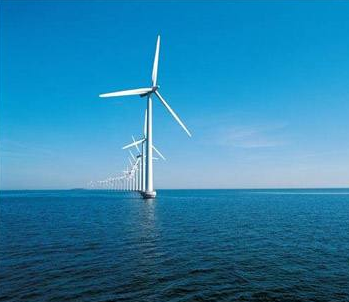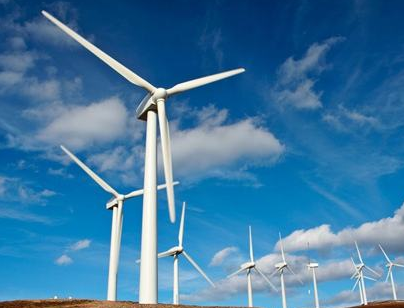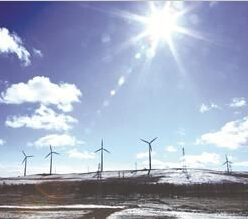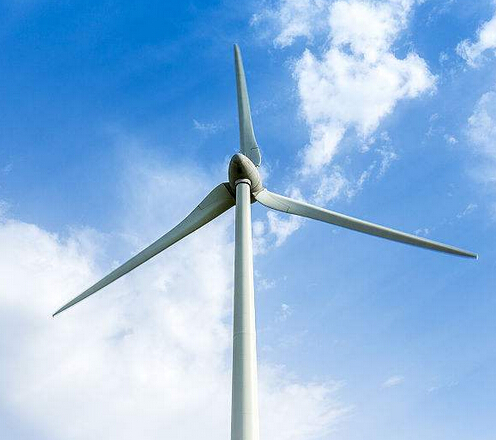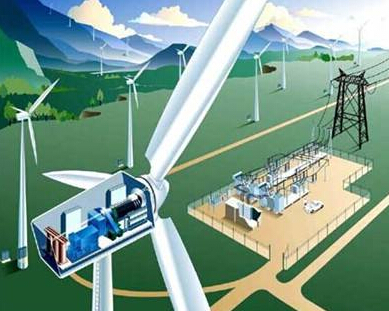As the cost of renewable energy declines, its market share is rising and it has now entered a large-scale application phase. However, the current energy storage technology is relatively backward, which is one of the pain points of this industry development. California was forced to cut its power generation because his solar and wind power plants could not absorb electricity and had to give up. China's huge wind power installed capacity makes the problem of power consumption particularly prominent. Wind power companies are facing a slow-moving market.
China has a huge installed base of subsidies.
Although China's new installed capacity has been declining every year since 2015, China's cumulative installed capacity in 2017 is still the world's number one, accounting for more than half of the global installed capacity.
However, with the rapid construction of wind power and photovoltaic power generation projects, the demand for subsidy funds has also increased rapidly. In recent years, the renewable energy development fund has been unable to make ends meet, and the gap in renewable energy subsidies has been expanding. As of the end of 2017, the accumulated gap in domestic renewable energy power generation subsidies reached 112.7 billion yuan. The original subsidy model was unsustainable.
The problem of consumption has improved. The development of the industry has cooled down.
According to the National Energy Administration (NEA) report, in 2017, China's wind power and photovoltaic power curtailment rates were 12% and 6%, respectively, down 5.2% and 4.3% from 2016 levels, accompanied by policy adjustments. The problem of abandoning electricity is further improved. As of the first quarter of 2018, China's wind curtailment rate was 8.5%. The power consumption problem has been further improved.
In order to further improve the power consumption problem, on May 25, 2018, the National Energy Administration issued the "Notice on the Relevant Requirements for Wind Power Construction Management in 2018". The state will implement a competitive mode to allocate wind power projects, reduce the intensity of power subsidies, and actively promote the nearest Fully absorb wind power projects. Also released is the “531 New Deal” on the photovoltaic industry, which will significantly reduce development targets and lower benchmark prices. Faced with new policies, wind power related companies are looking for a way out.v

Wind power operation and maintenance has become a new track for enterprise development
A well-developed adult should be separated from his parents and seek new living spaces independently. The vigorous development of China's new energy also depends on the strong support of the government. However, China's new energy industry has developed rapidly in recent years. If the subsidies are not adjusted, it is easy for the profits of the new energy industry to come mainly from the government.
Wind power companies lacking subsidies began to turn to the operation and maintenance market. The data shows that the proportion of O&M services of major machine manufacturers continues to expand. The adjustment of the business has become a compulsory course for major companies. For example, the wind farm self-operated business of Tianrun Management, a subsidiary of Goldwind Technology; for example, the major manufacturers have changed from “single selling machine” to “selling solution”; for example, wind power developers have said: “On one side, the price of electricity is reduced. When I can't get subsidies, I trade in the market, where does the profit come from? So I don't want to give it to others because I have to make it."
Competition in the field of wind power operation and maintenance is not only a traditional wind power developer and a wind power manufacturing company.
According to a report released by the International Renewable Energy Agency in January 2018, the cost of photovoltaic solar power in the world has fallen by more than 70% in the past seven years. The cost of wind power generation on land has also fallen by 25%.
However, compared with the more mature thermal power generation, the renewable energy source has the same number of power generation units with the same amount of electricity, solar energy and wind energy, which puts higher requirements on the management and operation of renewable energy projects.
Advances in technology have promoted refined and intelligent management of renewable energy, achieving the goal of improving efficiency and reducing costs. This is inseparable from the large-scale application of artificial intelligence, big data and information technology.
















 RCCN WeChat QrCode
RCCN WeChat QrCode Mobile WebSite
Mobile WebSite